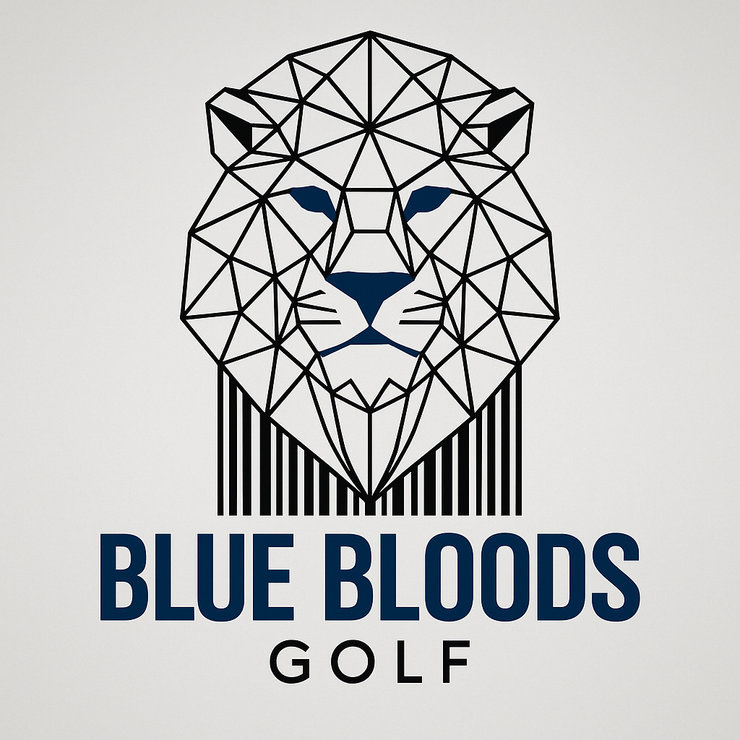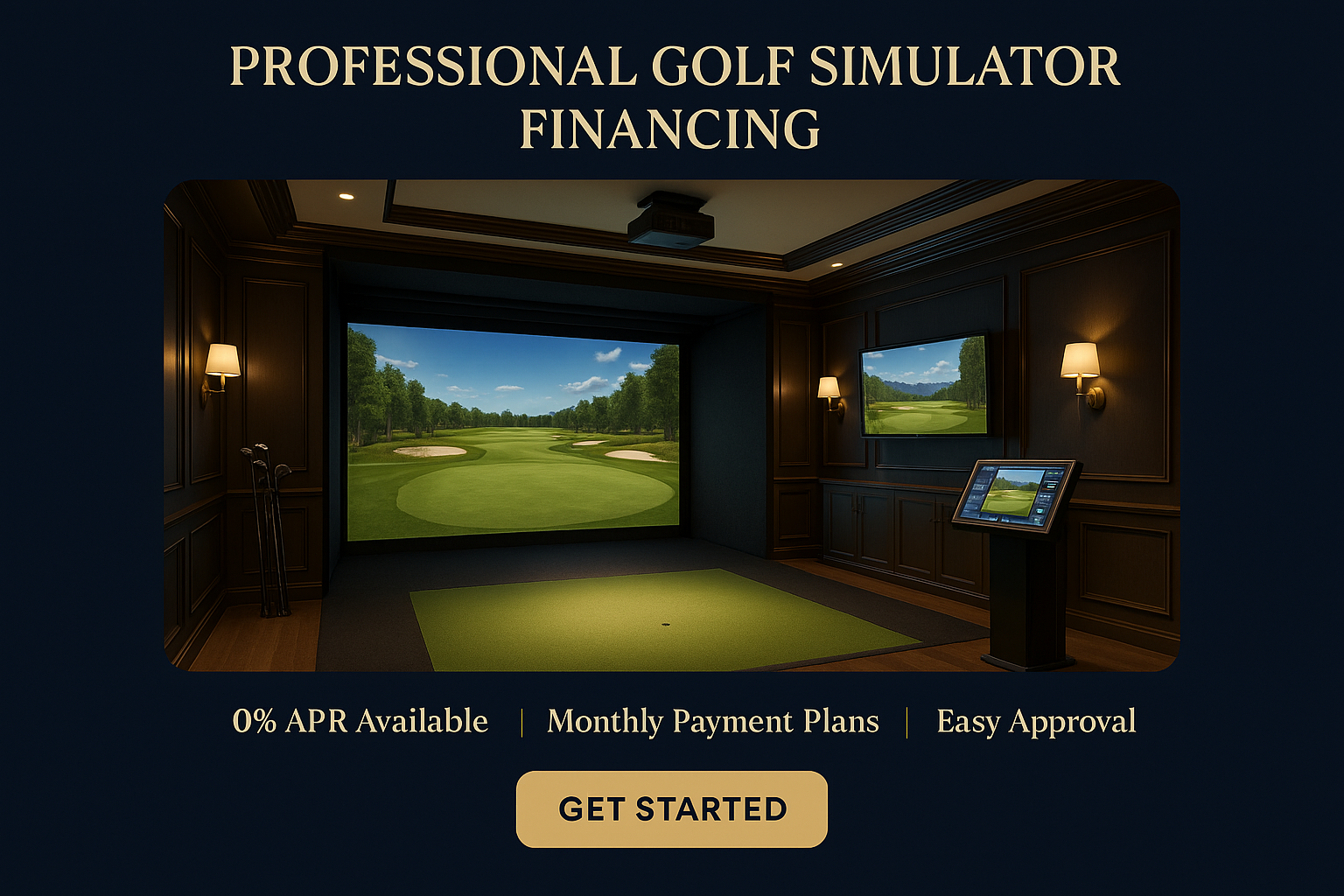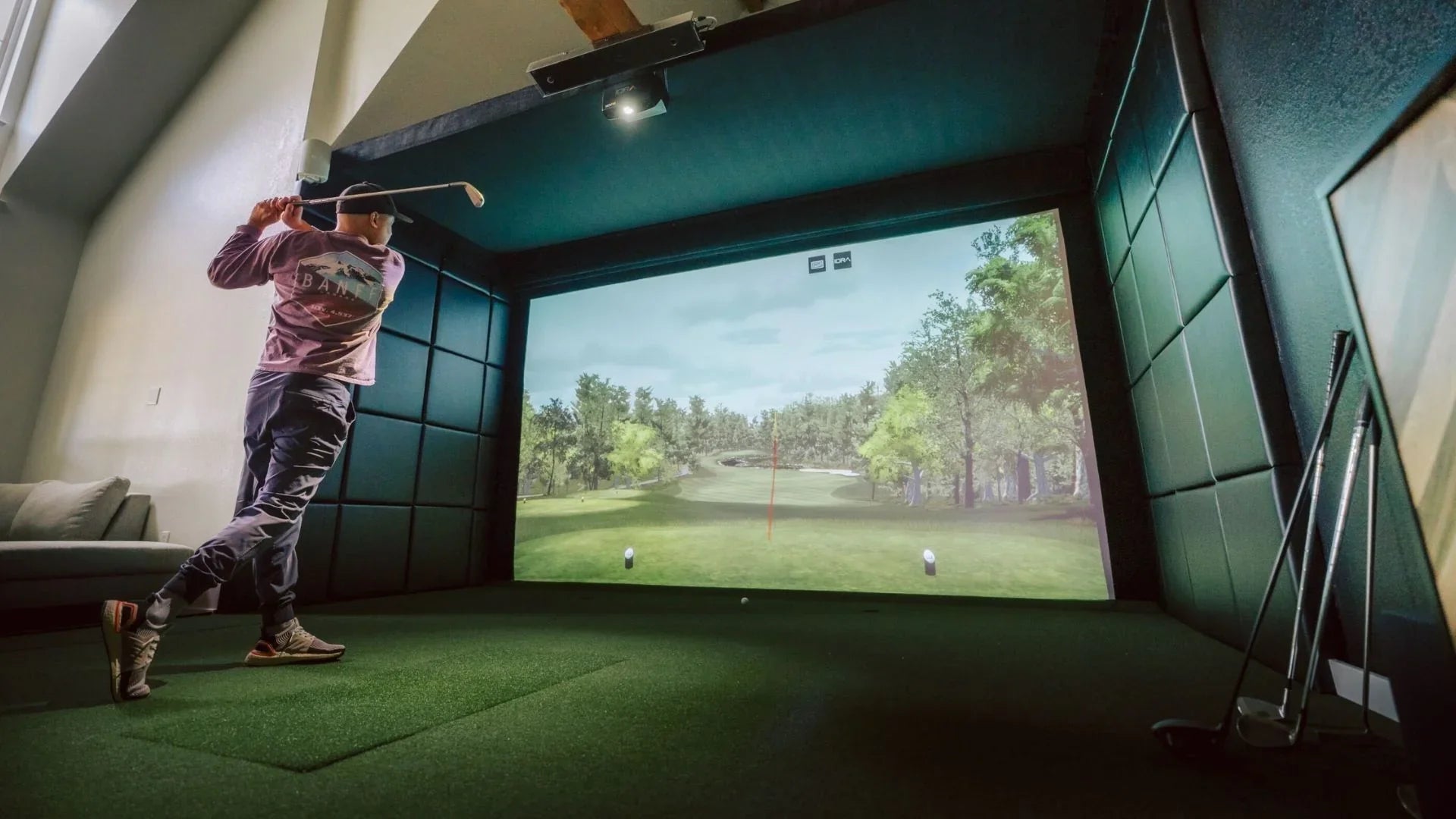You wake at 3 AM, mind racing through tomorrow's presentation, the quarterly numbers, the decision you can't unmake. You're successful by every external measure, but your nervous system doesn't know the difference between a board meeting and a bear attack.
You've tried the meditation apps. Downloaded Headspace, Calm, Insight Timer. Sat cross-legged for seven minutes feeling like you're failing at relaxation. You've got the gym membership, the Peloton in the garage, the running shoes that mock you from the closet. But here's the truth: when you're wired to achieve, to measure, to win—traditional stress relief feels like another item on your to-do list.
What if I told you that the answer isn't learning to sit still? What if the path to mental clarity is already wired into something you love—golf?
Why Traditional Stress Relief Fails Executives
Let's be honest about why most wellness advice doesn't work for high-performers like you.
Meditation apps feel passive. You're built to solve problems, make decisions, drive results. Sitting quietly while a soothing voice tells you to "notice your breath" feels like watching paint dry. Your competitive brain needs engagement, not emptiness.
Gym workouts become optimization projects. You track your splits, monitor your heart rate zones, compete with yesterday's numbers. The treadmill becomes another performance metric. You're not relaxing—you're executing a fitness protocol.
Traditional hobbies lack the achievement component. Painting, gardening, reading—they're fine for some people. But you need to see progress. You need measurable improvement. You need the satisfaction of mastery.
Golf is different. Golf offers something rare: the perfect intersection of physical movement, mental focus, measurable progress, and social acceptability. When you tell your spouse you're "going to practice your swing," nobody questions whether it's a legitimate use of time. But what's really happening in those moments is something far more valuable than lowering your handicap.
You're training your mind.
The Neuroscience of Golf as Meditation
Here's what happens in your brain when you step into your simulator and address the ball.
Flow state activation. Psychologist Mihaly Csikszentmihalyi spent decades studying optimal experience—that state where you're completely absorbed, where time disappears, where performance feels effortless. His research shows that flow requires a specific balance: the challenge must match your skill level. Too easy, you're bored. Too hard, you're anxious. Golf's handicap system creates this perfect balance naturally. Every shot is achievable yet demanding.
Parasympathetic nervous system engagement. The repetitive motion of your swing—the rhythm, the tempo, the ritual—activates your body's rest-and-digest system. This is the opposite of the fight-or-flight response that dominates your workday. Studies on repetitive motion show that rhythmic activities (knitting, walking, swimming, swinging a golf club) lower cortisol and increase GABA, your brain's primary calming neurotransmitter.
Attention training through single-point focus. In meditation, you focus on your breath. In golf, you focus on your target line, the back of the ball, the feeling of your grip. Both practices train the same neural pathway: the ability to hold attention on one thing while letting distractions fall away. This is the skill that lets you stay calm in high-pressure meetings, that helps you make clear decisions when stakes are high.
Immediate feedback loop. Your executive brain craves data. Launch monitors provide it. You see your swing speed, ball speed, launch angle, spin rate. But here's the key: unlike quarterly earnings or annual reviews, golf feedback is immediate and emotionally neutral. The ball doesn't judge you. The data doesn't threaten your identity. You can observe, adjust, and try again within seconds. This trains your brain to separate performance from self-worth—a skill that transfers directly to business resilience.
Your Home Simulator as Personal Dojo
The Japanese concept of a dojo isn't just a training space—it's a sacred space. A place where you leave the outside world at the door and focus entirely on mastery and self-improvement.
Your home golf simulator can become exactly this.
Elimination of external stressors. No slow play. No weather delays. No tee time pressure. No strangers watching your swing. The course doesn't close at sunset. You're not rushing to finish before dark or before your next appointment. Time expands. Pressure dissolves.
Complete environmental control. You choose the lighting—soft and calming or bright and energizing. You choose the music—silence, classical, jazz, or your favorite playlist. You control the temperature. Every element is optimized for your mental state, not dictated by external conditions.
Privacy for vulnerability. Here's what nobody talks about: getting better at anything requires being bad first. It requires experimentation, failure, awkward attempts. On a public course, ego gets in the way. In your simulator, you can hit the same shot fifty times, trying different grips, different stances, different mental approaches. You can be a beginner again without judgment.
Ritual creation. The walk from your house to your Swing Shed becomes a transition ritual. You're crossing a threshold. Leaving behind the role of CEO, parent, spouse, decision-maker. Becoming simply a person with a club and a target. This physical transition trains your brain to shift mental states—a skill you can replicate before important meetings or difficult conversations.
Practical Meditation Techniques for Simulator Practice
Let's make this concrete. Here are three protocols you can implement immediately.
Pre-Round Breathing Protocol (3 minutes)
Before you turn on the simulator, before you grab a club, sit for three minutes and practice box breathing:
-
Inhale for 4 counts
-
Hold for 4 counts
-
Exhale for 4 counts
-
Hold for 4 counts
-
Repeat
This is the same breathing technique used by Navy SEALs before high-stress operations. It regulates your nervous system and brings you into the present moment.
Then set an intention for your session. Not a score goal. Not a swing fix. An intention like: "I'm here to notice my tempo" or "I'm practicing staying calm after bad shots" or "I'm working on visualization today."
This shifts your brain from outcome-focused to process-focused—the foundation of both meditation and peak performance.
Mindful Swing Practice (10 balls)
Hit ten balls with zero concern for where they go. Your only job is to notice:
-
The pressure in your grip (is it tense or relaxed?)
-
The feeling of weight transfer (can you sense your balance shifting?)
-
Your breathing pattern (are you holding your breath at impact?)
-
The tempo of your swing (does it feel rushed or smooth?)
Use your launch monitor data not to judge yourself, but to observe patterns. "Interesting—when I hold my breath, my swing speed increases but my accuracy drops." You're training the observer part of your mind—the part that can notice stress responses without being controlled by them.
This is mindfulness. Not sitting on a cushion, but active awareness during movement.
Post-Session Reflection (5 minutes)
After you finish, spend five minutes journaling. Three simple questions:
-
What did I notice today? (Physical sensations, mental patterns, emotional states)
-
When did my mind wander? (What thoughts pulled me away from the present?)
-
What's one thing I want to practice next session? (Not fix—practice)
This reflection loop is what transforms random practice into deliberate mental training. You're building self-awareness, the foundation of emotional intelligence and leadership effectiveness.
From Simulator to Life: Transferable Skills
Here's where this becomes more than golf. The skills you develop in your simulator transfer directly to the high-pressure situations you face daily.
Pre-shot routine becomes pre-meeting centering. That ritual you develop before addressing the ball—checking your grip, taking a breath, visualizing the shot—becomes your ritual before walking into the boardroom. Same neural pathway. Same calming effect.
Handling bad shots builds resilience for business setbacks. You hit a drive into the water. You have a choice: rage, spiral, or reset. In the simulator, you practice the reset. You practice letting go of the last shot and focusing entirely on the next one. This is the exact skill you need when a deal falls through or a project fails. The simulator is a low-stakes training ground for high-stakes emotional regulation.
Visualization practice enhances strategic thinking. Before every shot, you visualize the ball flight—the trajectory, the landing, the roll. You're training your brain to see outcomes before they happen. This same visualization skill helps you anticipate market moves, imagine customer responses, and think three steps ahead in negotiations.
Measured breathing under pressure transfers to presentations. Standing over a six-foot putt with the match on the line, your heart races. You practice controlling your breath, slowing your heart rate, steadying your hands. This is identical to the moment before you present to the board or deliver difficult feedback. The physiological response is the same. The training transfers.
Your simulator isn't just making you a better golfer. It's making you a more resilient, focused, emotionally intelligent leader.
The Executive Sanctuary You Deserve
Let me ask you something: What's the cost of chronic stress?
Not the obvious costs—the sleep medication, the blood pressure pills, the tension headaches. I'm talking about the hidden costs. The decisions you make when you're running on cortisol and adrenaline instead of clarity and wisdom. The relationships that suffer when you bring work stress home. The creative solutions you never discover because your mind is too cluttered to see them.
Your simulator isn't an escape from your life. It's training for it. Every swing is practice in presence. Every round is rehearsal for staying calm when stakes are high.
You've invested in your education, your career, your business. You've invested in your home, your car, your wardrobe. But have you invested in a space that's exclusively yours? A sanctuary where the only goal is becoming more of who you want to be?
The executives, entrepreneurs, and professionals who work with us aren't buying golf equipment. They're designing personal dojos. They're creating third spaces—not work, not family obligations, but personal mastery time. They're recognizing that the most important performance enhancement tool isn't another productivity app or time management system.
It's the ability to be fully present. To perform under pressure. To reset after setbacks. To find calm in chaos.
That's what we build at Blue Bloods Golf. Not just simulators—sanctuaries.
Your Next Step
If this resonates with you, let's talk about your space and your goals. Not a sales call—a conversation about what you're building in your life and whether a home simulator could be part of that vision.
We offer free consultations where we discuss:
-
Your available space and how to optimize it for both performance and peace
-
The equipment that matches your skill level and wellness goals
-
Installation options that transform a room into a retreat
-
Financing solutions that make this investment accessible
You can also download our Executive Sanctuary Design Guide—a comprehensive resource on creating your personal wellness space, complete with room design principles, lighting for relaxation, sound considerations, and mindfulness practice protocols.
Or simply join our private community of mindful golfers. We share techniques, celebrate progress, and support each other in using golf as a tool for mental training and stress relief.
The question isn't whether you can afford this sanctuary.
The question is: what's the cost of not having it?
Ready to create your personal dojo?
📞 Call us: 1-502-465-3669📧 Email: support@bluebloodsgolf.com🌐 Visit: www.bluebloodsgolf.com
Blue Bloods Golf—Where passion meets precision, and golf becomes meditation.





